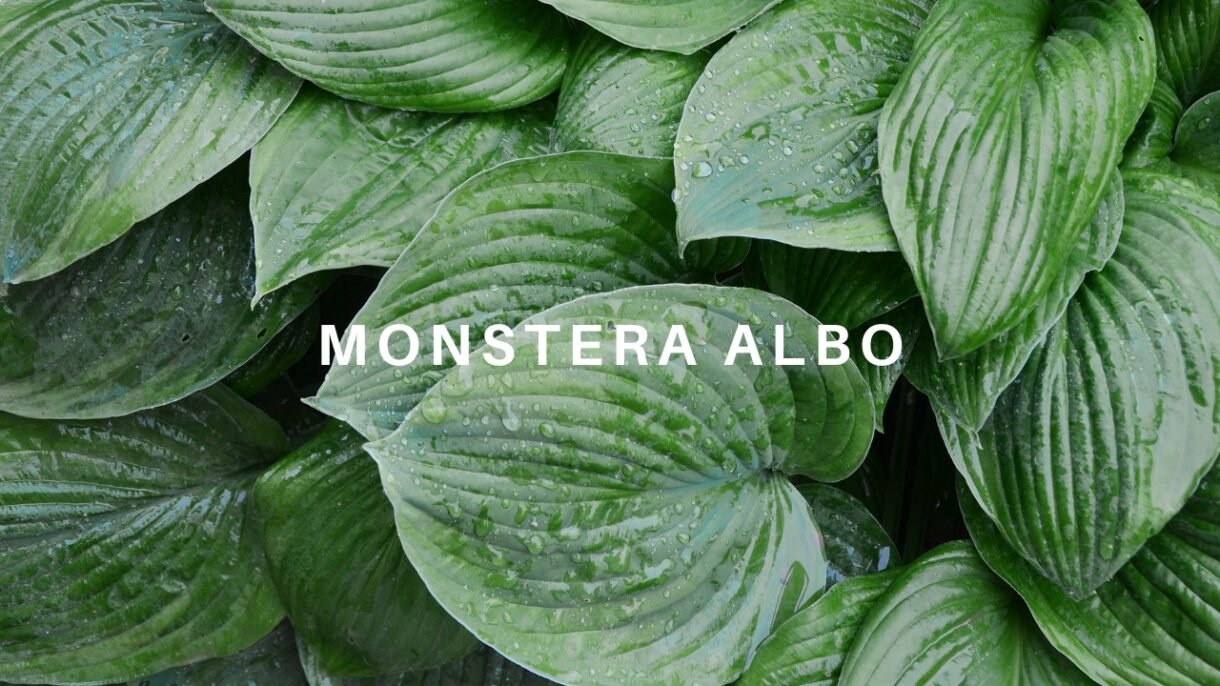Blog
Exploring Staģes: Breeding Grounds for Empathy and Unity

Staģes are not just physical platforms for performances; they are canvases for human expression, storytelling, and cultural exchange. They serve as spaces where art comes alive, transcending boundaries and connecting people from diverse backgrounds. In today’s world, the concept of staģes extends beyond traditional theaters to include various forms of artistic platforms that embrace inclusivity and diversity.
What Are Staģes?
At its core, a stage is a designated area where performances take place. These performances can range from theatrical plays and dance recitals to musical concerts and spoken word poetry. However, in a broader sense, a stage can be any platform where art is showcased, including virtual spaces, street performances, and even social media.
Cultural Significance
Staģes have always held a significant place in human culture. They are venues where stories are told, emotions are expressed, and ideas are shared. From ancient amphitheaters to modern digital platforms, staģes have evolved but their essence remains the same—facilitating human connection and cultural expression.
Role in Inclusive Artistic Expression
Inclusion in the arts means providing a platform for all voices to be heard, regardless of their background, identity, or ability. Staģes play a crucial role in this by offering a space for marginalized and underrepresented communities to share their stories and perspectives. This not only enriches the artistic landscape but also fosters empathy and understanding among audiences.
The History of Staģes
The journey of staģes is as old as human civilization itself. From the rudimentary performance spaces of ancient times to the sophisticated theaters of the modern era, staģes have continuously evolved, reflecting the changing dynamics of society and culture.
Ancient Staģes
In ancient Greece, the concept of the stage was integral to societal life. The amphitheaters of Athens were grand structures that hosted dramas and comedies, often addressing themes of politics, morality, and human nature. Similarly, in ancient Rome, staģes were central to public entertainment, featuring gladiatorial contests, theatrical performances, and public speeches.
The Middle Ages
During the Middle Ages, the church played a significant role in the development of staģes. Mystery plays and morality plays were performed in churchyards and town squares, using simple staģes to convey religious and moral lessons to the public. These performances were accessible to all, promoting inclusivity in a time when literacy was not widespread.
The Renaissance to Modern Era
The Renaissance marked a period of revival and innovation in the arts. The construction of permanent theaters, such as the Globe Theatre in London, provided dedicated spaces for performances. This era also saw the rise of opera and ballet, further diversifying the use of staģes. In the 20th century, technological advancements led to the creation of modern theaters equipped with advanced lighting and sound systems, enhancing the audience experience.
Contemporary Staģes
Today, staģes are more diverse than ever. They include traditional theaters, open-air venues, digital platforms, and even immersive virtual reality spaces. This evolution reflects the growing emphasis on inclusivity and accessibility in the arts, ensuring that everyone has the opportunity to engage with and appreciate artistic expression.
Staģes in Different Cultures
The concept of staģes transcends geographical boundaries, with each culture bringing its unique flavor to performance art. This section explores how different cultures around the world utilize stages, showcasing the rich diversity of artistic expression.
African Staģes
In many African cultures, staģes are often informal and community-centered. Traditional dances, music, and storytelling are performed in open spaces, with the audience actively participating in the performance. This communal approach to staģes fosters a strong sense of belonging and cultural continuity.
Asian Staģes
Asia boasts a rich tapestry of performance traditions, from the classical dances of India to the intricate puppet theaters of Indonesia. In Japan, Noh and Kabuki theaters are revered artistic forms, each with its distinct style and stage setup. These traditional staģes are meticulously designed to enhance the storytelling experience, often incorporating elaborate costumes, masks, and props.
European Staģes
Europe has a long history of theatrical innovation. The grand opera houses of Italy, the Shakespearean theaters of England, and the avant-garde performance spaces of Germany each contribute to the continent’s diverse artistic heritage. European staģes are known for their architectural grandeur and technical sophistication, creating immersive experiences for audiences.
American Staģes
In the United States, staģes range from Broadway theaters in New York City to experimental black box theaters in urban centers. The American stage is a melting pot of cultural influences, reflecting the country’s diverse population. From classical plays to contemporary performances, American stages celebrate a wide array of artistic expressions.
Latin American Staģes
Latin America is known for its vibrant and dynamic performance culture. Whether it’s the colorful street performances during Carnival in Brazil or the passionate tango shows in Argentina, staģes in Latin America are lively and engaging. These stages often blur the line between performers and the audience, creating an inclusive and interactive experience.
The Impact of Stages on Society
Stages are more than just platforms for artistic expression; they are powerful tools for social change. This section delves into the various ways in which stages influence society, challenge norms, and promote inclusivity.
Societal Narratives
Stages have the unique ability to reflect and shape societal narratives. Through performances, artists can address pressing social issues, challenge existing norms, and inspire change. For instance, plays and performances tackling topics like gender equality, racial injustice, and mental health can raise awareness and spark important conversations.
Challenging Norms
Artistic performances on stages often push the boundaries of conventional thinking. By presenting alternative perspectives and questioning societal norms, artists can challenge audiences to rethink their beliefs and attitudes. This can lead to greater acceptance and understanding of diverse viewpoints.
Promoting Social Change
Stages have historically been platforms for activism and social change. From the civil rights movements in the United States to the pro-democracy protests in Hong Kong, performances on stages have mobilized communities and driven social change. By giving a voice to the marginalized and oppressed, stages can be powerful agents of transformation.
Fostering Empathy
Art has the power to evoke empathy and understanding. By sharing personal stories and experiences on stage, artists can foster a deeper connection between performers and audiences. This emotional engagement can lead to greater empathy and support for social causes.
Stages in Modern Art
The advent of technology has revolutionized the concept of stages, leading to the emergence of new forms of artistic expression. This section explores how stages are integrated into modern art practices, including digital and performance art.
Digital Stages
With the rise of the internet, digital stages have become increasingly popular. Platforms like YouTube, Instagram, and TikTok provide artists with virtual stages to showcase their work to a global audience. This democratization of stages has made art more accessible and inclusive, allowing artists from diverse backgrounds to share their creativity.
Performance Art
Performance art is a contemporary form of artistic expression that often blurs the lines between the performer and the audience. Artists like Marina Abramović and Yoko Ono have used performance art to challenge societal norms and provoke thought. These unconventional stages emphasize the experiential and participatory nature of art.
Immersive Experiences
Modern technology has also given rise to immersive art experiences. Virtual reality (VR) and augmented reality (AR) create interactive stages where audiences can engage with the artwork in novel ways. These immersive stages offer a multisensory experience, making art more engaging and memorable.
Installation Art
Installation art transforms spaces into experiential stages. Artists like Yayoi Kusama and Olafur Eliasson create large-scale installations that invite audiences to step into their artworks. These installations often challenge perceptions and create a sense of wonder and introspection.
How to Experience Stages
For art lovers, experiencing stages can be a deeply enriching and fulfilling activity. This section provides practical tips on how to appreciate and engage with stages, whether in-person or online.
In-Person Experiences
Attend Live Performances: Attend theater plays, concerts, and dance recitals in your local area. Check out community theaters, cultural centers, and major performance venues for upcoming events.
Visit Art Galleries and Museums: Many galleries and museums host live performances and installations. These spaces often provide a unique setting for experiencing art.
Explore Outdoor Performances: Look for outdoor stages and street performances in your city. Festivals, markets, and public spaces often feature live performances that are accessible to all.
Online Experiences
Watch Online Performances: Many theaters and performance groups offer live-streamed or recorded performances online. Platforms like YouTube, Vimeo, and dedicated theater websites are great places to start.
Join Virtual Art Communities: Engage with virtual art communities on social media and online forums. Participate in discussions, share your experiences, and discover new artists and performances.
Explore Digital Art Platforms: Explore digital art platforms like Google Arts & Culture, which offer virtual tours of galleries and museums, as well as online exhibitions and performances.
Engaging with the Art
Research the Performance: Before attending a performance, take some time to research the artist, the genre, and the themes of the performance. This background knowledge can enhance your appreciation of the art.
Reflect on Your Experience: After experiencing a performance, take some time to reflect on your thoughts and feelings. Consider keeping a journal or discussing your experience with friends or fellow art lovers.
Support the Artists: Show your support for the artists and performers by attending their shows, sharing their work on social media, and purchasing their merchandise. Your support can make a significant impact on their careers.
You May Also Like: Exploring Calandrando: A Legacy of Wonder
Conclusion
Staģes are powerful platforms that bring people together, celebrate diversity, and promote inclusivity. By exploring the rich history, cultural significance, and modern applications of staģes, we can gain a deeper appreciation for the role they play in our lives. Whether you are an avid theater-goer or a casual art enthusiast, embracing stages can open up a world of artistic expression and cultural exploration.
We encourage you to share your favorite staģes experiences and continue to support the arts. By doing so, you contribute to a more inclusive and vibrant artistic community.
Thank you for joining us on this inclusive exploration of staģes. We look forward to hearing about your experiences and insights.
FAQs
What defines performance art?
Performance art is a live art form that combines visual art with dramatic performance. It is an interdisciplinary approach that may involve scripts, improvisation, and collaboration with the audience. The work of performance artists like Marina Abramović often focuses on the body, time, and the relationship between performer and audience to challenge conventions and explore the themes of presence and the self.
How has technology influenced modern art staģes?
Technology has significantly transformed modern art staģes by introducing digital and virtual platforms. The internet has provided artists with new virtual staģes like YouTube, Instagram, and TikTok, democratizing access to art and allowing artists from diverse backgrounds to reach global audiences. Additionally, advancements in virtual reality (VR) and augmented reality (AR) have led to immersive and interactive art experiences, blurring the boundaries between the artist, the artwork, and the audience.
Can I experience immersive art if I don’t have access to VR equipment?
Yes, immersive art isn’t solely confined to virtual reality experiences. Many artists create immersive installations that transform physical spaces, which do not require VR equipment to enjoy. Works by artists like Yayoi Kusama and Olafur Eliasson engage audiences through large-scale installations that you can walk through, interact with, and experience with your senses. These installations often take place in galleries, museums, and public spaces.
How can I support performing artists and performers?
You can support performing artists and performers by attending live performances, buying tickets, or purchasing merchandise. Donating to arts organizations or directly to artists’ crowdfunding campaigns can also help. Online, you can support artists by viewing their digital content, subscribing to their channels, sharing their work on social media, and engaging with their platforms to increase their visibility.
Are there any platforms to explore art globally without traveling?
Yes, digital platforms like Google Arts & Culture offer extensive resources to explore art from around the world without leaving your home. This platform provides virtual tours of museums and galleries, high-resolution images of artwork, and online exhibitions. It’s a great way to experience global art, learn about different cultures, and discover new artists.
Blog
Hidden Menace in Your Home? 10 Warning Signs of Mold Toxicity You Should Know

Imagine waking up each day feeling tired, with a constant headache, and persistent coughing. You might think it’s just a cold or stress from a busy lifestyle. But what if the culprit is lurking right within your home? Mold toxicity is a hidden danger that can lead to serious health issues. It occurs when you breathe in mold spores or come into contact with mold, which can grow in damp and poorly ventilated areas of your home. This blog post will explore what mold toxicity is, its warning signs, health impacts, detection methods, prevention tips, and when to seek professional help.
What Exactly is Mold Toxicity?
Mold toxicity stems from exposure to toxic mold, also known as mycotoxins. These molds release spores into the air, which can then be inhaled or come into contact with your skin. Mycotoxins are harmful chemicals produced by certain types of mold, and they can cause a variety of health problems ranging from mild allergic reactions to severe respiratory issues.
Mold can thrive in any damp environment, making basements, bathrooms, and kitchens common hotspots. Leaky roofs, windows, and pipes are typical causes of mold growth. Even high humidity levels in your home can promote mold development. Understanding the causes and staying vigilant can help you keep mold at bay.
Ten Warning Signs of Mold Toxicity
Persistent Sinus Issues
If you find yourself constantly battling sinus infections, it might be more than just seasonal allergies. Mold can irritate the nasal passages, leading to congestion, sneezing, and a runny nose. These symptoms may persist despite taking allergy medication, indicating that mold could be the underlying cause.
Chronic Fatigue
Waking up tired after a full night’s sleep is frustrating and can seriously impact your daily life. Mold exposure can lead to chronic fatigue by affecting your body’s ability to produce energy. You might feel lethargic and find it difficult to complete tasks that were once easy.
Frequent Headaches
Mold toxins can trigger headaches and migraines. If you notice that your headaches worsen when you’re at home and improve when you’re outside, mold might be the cause. Keeping a headache diary can help you spot patterns and identify potential triggers.
Respiratory Problems
Coughing, wheezing, and shortness of breath are common symptoms of mold toxicity. Mold spores can irritate the lungs and exacerbate conditions like asthma. If you or your family members experience unexplained respiratory issues, it’s worth investigating mold as a possible cause.
Skin Irritations
Rashes, itching, and hives can result from direct contact with mold. Mycotoxins can penetrate the skin, causing these uncomfortable symptoms. If you notice skin irritations that don’t respond to typical treatments, consider the possibility of mold exposure.
Eye Irritation
Red, itchy, and watery eyes can be a sign of mold toxicity. Mold spores can irritate the eyes, leading to discomfort and vision problems. If you experience these symptoms indoors but find relief outside, mold might be affecting your eye health.
Cognitive Issues
Memory loss, difficulty concentrating, and brain fog are alarming symptoms associated with mold toxicity. Exposure to mycotoxins can impact brain function, making it hard to focus on tasks or recall information. These cognitive issues can be especially concerning and should not be ignored.
Unexplained Muscle and Joint Pain
Mold toxicity can cause muscle cramps, joint pain, and stiffness. These symptoms can mimic conditions like arthritis, making it challenging to pinpoint mold as the cause. If traditional treatments don’t alleviate your pain, consider mold exposure as a potential factor.
Gastrointestinal Problems
Digestive issues such as nausea, vomiting, diarrhea, and stomach cramps can result from mold toxicity. Mold can affect your gut health, leading to a range of gastrointestinal problems. Tracking your symptoms and considering mold exposure can help you find relief.
Mood Swings and Anxiety
Mold exposure can impact your mental health, leading to mood swings, anxiety, and depression. Mycotoxins can affect neurotransmitter function, causing changes in your emotional well-being. If you notice unexplained changes in your mood, mold toxicity could be a contributing factor.
Health Impacts of Mold Toxicity
Respiratory Issues
Mold toxicity can significantly impact your respiratory system. Prolonged exposure to mold spores can cause chronic bronchitis, asthma, and other respiratory conditions. In severe cases, mold exposure can lead to life-threatening lung infections.
Allergic Reactions
Allergic reactions to mold can range from mild to severe. Symptoms include sneezing, runny nose, itchy eyes, and skin rashes. For individuals with mold allergies, exposure can trigger asthma attacks and other serious health problems.
Neurological Effects
Mold toxicity can affect the nervous system, leading to cognitive issues, headaches, and mood disorders. Research has shown that mycotoxins can cross the blood-brain barrier, causing inflammation and neurological damage.
Immune System Compromise
Chronic mold exposure can weaken the immune system, making it harder for your body to fight off infections. This can lead to frequent illnesses, slow recovery times, and increased susceptibility to other health issues.
Detecting Mold in Your Home
Visual Inspection
The first step in detecting mold is conducting a thorough visual inspection of your home. Look for signs of mold growth in damp areas such as basements, bathrooms, and kitchens. Pay close attention to areas with water damage or leaks.
Musty Odor
A musty odor is a telltale sign of mold growth. If you notice a persistent musty smell in your home, it’s likely that mold is present. Investigate the source of the odor to identify and address the mold problem.
Professional Testing
If you suspect mold but can’t find any visible signs, consider hiring a professional mold inspector. They can conduct air quality tests and surface sampling to detect hidden mold and identify the type of mold present.
Prevention and Remediation
Control Moisture Levels
To prevent mold growth, it’s crucial to control moisture levels in your home. Fix any leaks promptly, use dehumidifiers in damp areas, and ensure proper ventilation in bathrooms and kitchens.
Regular Cleaning
Regular cleaning can help prevent mold growth. Use mold-resistant cleaning products and keep your home dry and clean. Pay special attention to areas prone to moisture buildup, such as shower curtains and window sills.
Safe Mold Removal
If you find mold in your home, it’s essential to remove it safely. Wear protective gear, such as gloves and a mask, to avoid inhaling mold spores. Use a mixture of water and detergent to scrub away the mold, and dispose of any contaminated materials.
Importance of Professional Help
Severe Mold Infestations
For severe mold infestations, it’s best to seek professional help. Mold remediation specialists have the tools and expertise to safely and effectively remove mold from your home. Attempting to tackle a large mold problem on your own can be dangerous and ineffective.
Health Concerns
If you or your family members experience health issues related to mold exposure, consult a healthcare professional. They can provide guidance on managing symptoms and suggest ways to reduce further exposure to mold.
Long-Term Solutions
Professional mold remediation can provide long-term solutions to prevent future mold growth. Experts can identify and address the root cause of the mold problem, ensuring your home remains mold-free.
You May Also Like: Discover the Mighty Benefits of Wellhealthorganic Buffalo Milk
Conclusion
Mold toxicity is a serious issue that can have significant health impacts. By understanding the warning signs and taking steps to prevent and address mold growth, you can protect your home and your health. If you suspect mold toxicity, don’t hesitate to seek professional help to ensure a safe and healthy living environment.
FAQS
Q: Can mold cause long-term health issues?
A: Yes, prolonged exposure to mold can lead to chronic health problems such as respiratory issues, neurological effects, and weakened immune system.
Q: How can I prevent mold growth in my home?
A: To prevent mold growth, it’s essential to control moisture levels and regularly clean areas prone to dampness. If you find mold, remove it safely and address any underlying moisture issues.
Q: Can I tackle a large mold problem on my own?
A: It’s best to seek professional help for severe mold infestations. Mold remediation specialists have the tools and expertise to safely remove mold and address the root cause of the issue.
What are the most common areas for mold growth in a home?
Mold thrives in damp and poorly ventilated areas. Common locations for mold growth include basements, bathrooms, kitchens, and areas with water damage or leaks.
How can I prevent mold growth in my home?
To prevent mold growth, control moisture levels by fixing leaks, using dehumidifiers, and ensuring proper ventilation. Regular cleaning and using mold-resistant products can also help.
When should I seek professional help for mold issues?
Seek professional help for severe mold infestations, health concerns related to mold exposure, or when you can’t identify the source of mold. Professional mold remediation can provide long-term solutions to prevent future mold growth.
Can mold toxicity cause long-term health problems?
Yes, prolonged exposure to mold can lead to chronic respiratory issues, neurological effects, and weakened immune systems. It’s essential to address mold problems promptly to protect your health.
Are there any DIY methods for detecting mold in my home?
DIY methods for detecting mold include visual inspections and using mold test kits available at hardware stores. However, for accurate results, consider hiring a professional mold inspector.
Blog
Discover the World of Tamil Cinema on 1tamilmv.prof

Are you a fan of Tamil cinema looking for a treasure trove of movies? Or maybe you’re a movie enthusiast who loves to explore torrents for the latest releases and timeless classics? If so, then 1tamilmv.prof might just be your new favorite website. In this blog post, we’ll take you on a comprehensive tour of 1tamilmv.prof, highlighting its features, benefits, and everything you need to know to make the most of your movie-watching experience.
What is 1tamilmv.prof?
1tamilmv.prof is a popular torrent website that specializes in Tamil movies. It offers a vast collection of Tamil films, ranging from the newest blockbusters to old favorites. Whether you’re looking for high-definition (HD) prints or standard quality, you’ll find a variety of options to choose from. It’s a go-to platform for many Tamil cinema fans who want easy access to their favorite movies.
Why 1tamilmv.prof Stands Out
In the crowded world of torrent websites, 1tamilmv.prof stands out for several reasons. First and foremost is its extensive library of Tamil movies. The site is regularly updated with the latest releases, so you never have to miss out on new films. Additionally, it offers movies in multiple formats and resolutions, catering to different preferences and devices.
Another standout feature is the user-friendly interface. Even if you’re new to torrenting, navigating 1tamilmv.prof is a breeze. The site is well-organized, with categories and search functions that make finding your desired movie quick and easy.
How to Access 1tamilmv.prof
Accessing 1tamilmv.prof is straightforward, but there are a few steps you need to follow to ensure a smooth experience. First, you’ll need a reliable VPN service. Since torrent websites often face legal challenges, a VPN will help you access the site securely and anonymously.
Next, visit the 1tamilmv.prof website. You’ll find a clean homepage with various categories like Latest Movies, Popular Movies, and more. Use the search bar or browse through the categories to find the movie you want to download.
Navigating the Homepage
The homepage of 1tamilmv.prof is designed to be user-friendly. At the top, you’ll find a search bar where you can type in the name of the movie you’re looking for. Below that, there are various categories and sections, such as “Latest Movies,” “Popular Movies,” and “HD Movies.” Each section is populated with thumbnails of movies, making it easy to scroll through and find something that catches your eye.
Using the Search Function
The search function is one of the most useful features of 1tamilmv.prof. Simply type in the name of the movie you want, and the site will display a list of results. You can also use the search function to find movies by actors, directors, or genres. This makes it incredibly convenient to locate specific films, even if you only have partial information.
Downloading Movies
Once you’ve found the movie you want to download, click on its thumbnail to go to the movie’s page. Here, you’ll find detailed information about the film, including its release date, cast, and a brief synopsis. Scroll down, and you’ll see various download links. These links are usually labeled with the movie’s resolution and file size, so you can choose the version that best suits your needs.
Click on the download link, and a new page will open. This page will have the actual torrent file or magnet link that you need to download the movie. Open this link with your torrent client, and the download will begin.
Quality and Resolution Options
One of the key advantages of 1tamilmv.prof is the variety of quality and resolution options available. Whether you’re looking for a high-definition experience or a smaller file size for quicker downloads, you’ll find multiple options to choose from. Common resolutions include 720p, 1080p, and sometimes even 4K UHD.
Understanding Torrent Files and Magnet Links
When downloading movies from 1tamilmv.prof, you may come across terms like “torrent files” and “magnet links.” Torrent files are small files that contain metadata about the files you want to download. You’ll need a torrent client, like uTorrent or BitTorrent, to open these files and start the download process.
Magnet links, on the other hand, are direct links that can be opened with a torrent client. They eliminate the need to download a separate torrent file, making the process even more straightforward.
Legal Considerations
It’s important to note that while 1tamilmv.prof offers a convenient way to download Tamil movies, it operates in a legal gray area. Downloading copyrighted material without permission is illegal in many jurisdictions. To stay on the right side of the law, consider using legal streaming services whenever possible.
The Importance of Using a VPN
Given the legal risks associated with torrenting, using a VPN (Virtual Private Network) is highly recommended when accessing 1tamilmv.prof. A VPN hides your IP address and encrypts your internet connection, providing an extra layer of security and anonymity. This helps protect you from potential legal repercussions and keeps your online activities private.
Community and User Reviews
One of the standout features of 1tamilmv.prof is its active community. Users often leave reviews and comments on movie pages, providing valuable insights into the quality of the download and the movie itself. These reviews can help you decide whether a particular download is worth your time.
Alternatives to 1tamilmv.prof
While 1tamilmv.prof is a fantastic resource for Tamil movies, it’s always good to have alternatives. Websites like Tamilrockers, Isaimini, and Madrasrockers also offer extensive libraries of Tamil films. However, each site has its pros and cons, so it’s worth exploring multiple options to find the one that best suits your needs.
Staying Updated with the Latest Releases
One of the best ways to stay updated with the latest releases on 1tamilmv.prof is to follow their social media channels or join their mailing list. Many torrent sites have Telegram groups, Twitter accounts, or Facebook pages where they announce new uploads. This ensures you never miss out on the latest movies.
Troubleshooting Common Issues
Occasionally, you might encounter issues when using 1tamilmv.prof. Common problems include broken links, slow download speeds, or difficulty accessing the site. Here are some tips to troubleshoot these issues:
- Broken Links: If you find a broken link, try another download link or search for an alternative source. User comments can also provide updates on working links.
- Slow Download Speeds: Slow speeds can be due to various factors, including your internet connection or the number of seeders for a particular torrent. Try downloading at different times of the day or look for torrents with more seeders.
- Site Access Issues: If you’re having trouble accessing 1tamilmv.prof, check if the site is down or blocked in your region. Using a VPN can often resolve access issues.
The Future of Torrenting and 1tamilmv.prof
The world of torrenting is constantly evolving, with new technologies and legal challenges emerging all the time. Despite these challenges, platforms like 1tamilmv.prof continue to thrive, offering movie enthusiasts a convenient way to access their favorite films. As long as there is demand for easily accessible, high-quality content, torrent sites will likely remain a popular choice for many.
You May Also Like: RusticoTV: Your Smart Entertainment Solutionhttps://dailymagazinehub.com/rusticotv/
Conclusion
1tamilmv.prof offers a fantastic resource for Tamil cinema fans and movie enthusiasts alike. With its extensive library, user-friendly interface, and variety of quality options, it stands out as one of the best torrent sites for Tamil movies. However, it’s essential to use the site responsibly and consider the legal implications of torrenting.
For those looking to explore the world of Tamil cinema, 1tamilmv.prof provides an excellent starting point. Whether you’re a longtime fan or new to the genre, you’ll find something to enjoy. Just remember to use a VPN, stay safe, and happy watching!
If you’re interested in discovering more about torrenting or Tamil cinema, feel free to explore our other blog posts and resources. Thank you for reading, and we hope you enjoy your movie-watching experience!
FAQs
Is it safe to download movies from 1tamilmv.prof?
Downloading movies from 1tamilmv.prof involves certain risks, including exposure to malware and legal repercussions for downloading copyrighted content without permission. To minimize these risks, always use a VPN, have a reliable antivirus program, and ensure you are aware of the legalities in your jurisdiction.
. What should I do if my download from 1tamilmv.prof is slow?
If you experience slow download speeds, try these solutions:
- Check your internet connection.
- Download during off-peak hours.
- Choose torrents with more seeders.
- Ensure your torrent client is correctly configured.
How can I access 1tamilmv.prof if it’s blocked in my country?
If 1tamilmv.prof is blocked in your region, using a VPN can help you bypass these blocks by masking your IP address and encrypting your internet connection, thereby allowing you to access the site.
. What are the different quality options available on 1tamilmv.prof?
1tamilmv.prof offers various quality and resolution options for movie downloads, including 720p, 1080p, and sometimes even 4K UHD. This allows users to choose between high-definition experiences and smaller file sizes for quicker downloads.
Where can I find the latest movie releases on 1tamilmv.prof?
To stay updated with the latest movie releases on 1tamilmv.prof, follow their social media channels or join their mailing list. They often have Telegram groups, Twitter accounts, or Facebook pages where new uploads are announced.
Blog
The Enchanting World of Monstera Albo for Plant Enthusiasts

Imagine stepping into a room and being greeted by the sight of a stunning, variegated leaf that’s equally enchanting and mysterious—the Monstera Albo. For plant enthusiasts, the Monstera Albo isn’t just another houseplant; it’s a statement piece that captures attention and admiration. This blog post aims to introduce you to the captivating world of the Monstera Albo, exploring its history, unique features, care tips, propagation techniques, and more. Whether you’re new to plant parenthood or a seasoned green thumb, this guide will help you appreciate and care for this extraordinary plant.
The Monstera Albo’s Origins
A Glimpse Into History
The Monstera Albo, formally known as Monstera deliciosa ‘Albo Variegata,’ traces its roots back to the tropical rainforests of Central and South America. It’s a natural mutation of the more common Monstera deliciosa, prized for its striking white and green variegated leaves. Unlike its all-green cousin, the Monstera Albo has captivated plant enthusiasts worldwide with its unique appearance.
Natural Habitat
In the wild, the Monstera Albo thrives in humid, dense forests, climbing trees with its aerial roots. This environment provides it with ample shade and moisture, conditions that are crucial for its growth. Understanding its natural habitat can give you insights into how best to care for this plant in your home.
Cultural Significance
Throughout history, the Monstera species has been celebrated in various cultures. In Mexico, it’s known as “Monstera” due to its monstrous size and leaves. Its variegated version, the Monstera Albo, has become a symbol of luxury and elegance, often featured in high-end interior designs and social media feeds.
Unique Features of the Monstera Albo
Variegation and Leaf Patterns
One of the most striking features of the Monstera Albo is its variegated leaves, which display an array of white and green patterns. Each leaf is unique, with no two leaves looking exactly alike. This variegation is due to a genetic mutation that affects chlorophyll production, making each leaf a living piece of art.
Fenestrations
The Monstera Albo, like its green cousin, develops fenestrations—those iconic holes and splits in its leaves. These fenestrations are not just aesthetically pleasing; they serve a practical purpose in the plant’s natural habitat, allowing light to pass through to lower leaves and reducing wind resistance.
Growth Habit
The Monstera Albo is a climbing plant, using its aerial roots to anchor itself to trees or other structures. In a home setting, this means it will appreciate a moss pole or trellis to support its growth. Given the right conditions, it can become a large and impressive centerpiece in any room.
Care and Maintenance
Light Requirements
Monstera Albo thrives in bright, indirect light. Direct sunlight can scorch its delicate leaves, while low light can result in less vibrant variegation. Ideally, place your Monstera Albo near a north or east-facing window to ensure it gets the right amount of light.
Watering Tips
Watering your Monstera Albo requires a balanced approach. The soil should be kept consistently moist but not waterlogged. Overwatering can lead to root rot, while underwatering can cause the leaves to wilt and dry out. A good rule of thumb is to water when the top inch of soil feels dry to the touch.
Humidity and Temperature
Given its tropical origins, the Monstera Albo prefers high humidity levels. A room humidity of around 60% is ideal. If your indoor climate is on the drier side, consider using a humidifier or placing a tray of water near the plant. The plant also thrives in temperatures between 65-80°F (18-27°C).
Soil and Fertilization
A well-draining, peat-based potting mix is ideal for Monstera Albo. Adding perlite or orchid bark can improve drainage. During the growing season (spring and summer), feed your plant with a balanced, water-soluble fertilizer every four to six weeks to support its growth.
Propagation Techniques
Stem Cuttings
One of the most popular methods to propagate Monstera Albo is through stem cuttings. Here’s a step-by-step guide:
- Select a healthy stem with at least one node and one leaf.
- Cut the stem just below the node using a clean, sharp knife or scissors.
- Place the cutting in water or directly into a pot with well-draining soil.
- If using water, change it every few days to prevent stagnation. Roots should develop within a few weeks.
Air Layering
Air layering is another effective method, especially for larger plants. Here’s how to do it:
- Choose a healthy stem and make a small cut just below a node.
- Wrap the cut area with damp sphagnum moss and secure it with plastic wrap.
- Keep the moss moist until roots develop, then cut the stem below the new root growth and plant it in soil.
Division
If your Monstera Albo has grown large enough, you can divide the root ball to create new plants. This method is best done during repotting:
- Gently remove the plant from its pot and shake off excess soil.
- Carefully separate the root ball into smaller sections, ensuring each section has at least one stem and leaf.
- Plant each section in its own pot with fresh soil.
Common Issues and Troubleshooting
Pests
Monstera Albo can be susceptible to pests like spider mites, mealybugs, and aphids. Regularly inspect your plant for signs of infestation, such as webbing, white cottony spots, or sticky residue. Treat affected plants with insecticidal soap or neem oil.
Diseases
Root rot is a common issue caused by overwatering. Symptoms include yellowing leaves and a mushy stem. To prevent root rot, ensure your plant’s soil is well-draining and avoid letting it sit in water. If root rot occurs, trim away the affected roots and repot the plant in fresh soil.
Yellowing Leaves
Yellowing leaves can be a sign of several issues, including overwatering, underwatering, or nutrient deficiencies. Assess your plant’s watering routine and ensure it’s getting the right amount of light and nutrients. If the problem persists, consider testing the soil’s pH levels.
Monstera Albo in Home Décor
Statement Pieces
The Monstera Albo’s large, variegated leaves make it an eye-catching addition to any room. Use it as a statement piece in your living room or entryway, where its beauty can be fully appreciated.
Complementary Plants
Pair your Monstera Albo with other tropical plants like philodendrons or pothos to create a lush, jungle-like atmosphere. Their similar care requirements make them excellent companions.
Creative Displays
Get creative with how you display your Monstera Albo. Consider using decorative pots, plant stands, or hanging baskets. You can also train it to climb a trellis or moss pole for a dramatic, vertical effect.
You May Also Like: Discover Wellhealthorganic Home Remedies Tag for Better Health
Conclusion
The Monstera Albo is more than just a plant; it’s a living piece of art that brings a touch of the tropics into your home. With its unique variegation, impressive fenestrations, and manageable care requirements, it’s no wonder this plant has captured the hearts of plant enthusiasts worldwide. By following the tips and techniques outlined in this guide, you’ll be well on your way to growing and maintaining a healthy, thriving Monstera Albo.
If you’re eager to learn more or need personalized advice, consider booking a consultation with one of our expert plant stylists. We’re here to help you every step of the way on your plant parenthood journey. Thank you for being a part of our vibrant community of plant lovers!
Frequently Asked Questions
How Often Should I Water My Monstera Albo?
Water your Monstera Albo when the top inch of soil feels dry to the touch. This usually means watering once a week, but it can vary depending on your home’s humidity and temperature.
Can I Grow Monstera Albo Outdoors?
Monstera Albo can be grown outdoors in USDA hardiness zones 10-12. In cooler climates, it’s best to keep it indoors or bring it inside during the colder months.
How Can I Increase Humidity for My Monstera Albo?
Increase humidity by using a humidifier, placing a tray of water near the plant, or misting its leaves regularly. Grouping plants together can also help create a more humid microenvironment.
Why Are the Leaves on My Monstera Albo Turning Brown?
Brown leaves can indicate several issues, including low humidity, over-fertilization, or direct sunlight exposure. Adjusting your care routine should help resolve the problem.
Is Monstera Albo Toxic to Pets?
Yes, Monstera Albo is toxic to cats and dogs if ingested. Keep it out of reach of pets or consider choosing pet-safe plants for your home.
-

 Business and Finance5 months ago
Business and Finance5 months agoThe 5 Ways to Boost Your Cash Flow Forecasting Instantly
-

 Blog7 months ago
Blog7 months agoHow It Works Magazine: A Comprehensive Guide
-

 Sports4 months ago
Sports4 months agoThe Best Games on Unblocked Games 67
-

 Food4 months ago
Food4 months agoExploring the Flavorful World of Cassasse: A Culinary Journey
-

 Blog4 months ago
Blog4 months agoExploring the Wonders of Geek Culture with Geekzilla Podcast
-

 Entertainment4 months ago
Entertainment4 months agoExploring The Grand Duke Is Mine Spoilers: A Comprehensive Guide
-

 Business and Finance7 months ago
Business and Finance7 months agoThe Seven Ps of a Highly Successful CFO
-

 News4 months ago
News4 months agoDiscovering Alien Gear Holsters: Your Ultimate Destination for Quality Shooting Gear

























